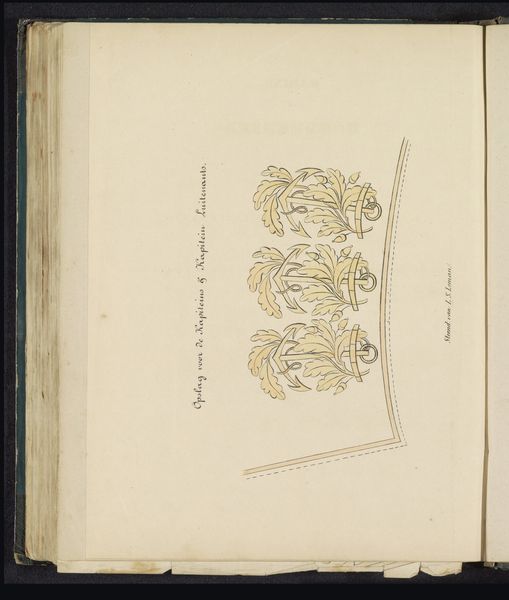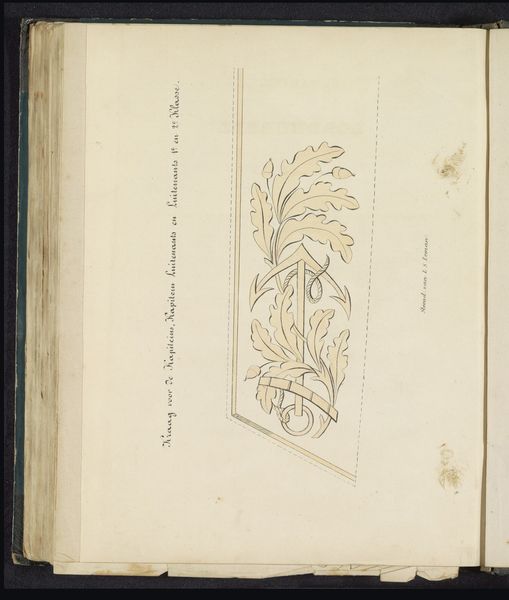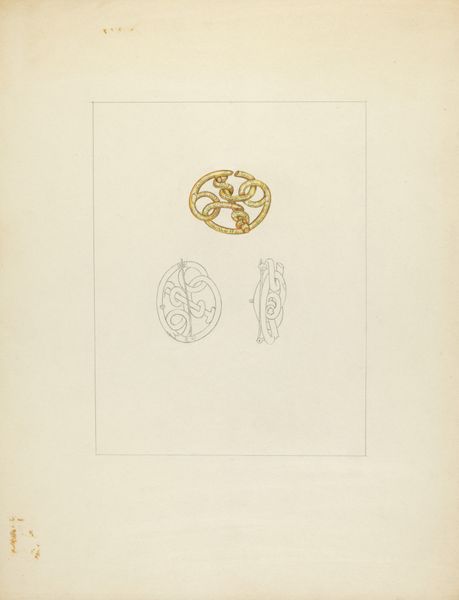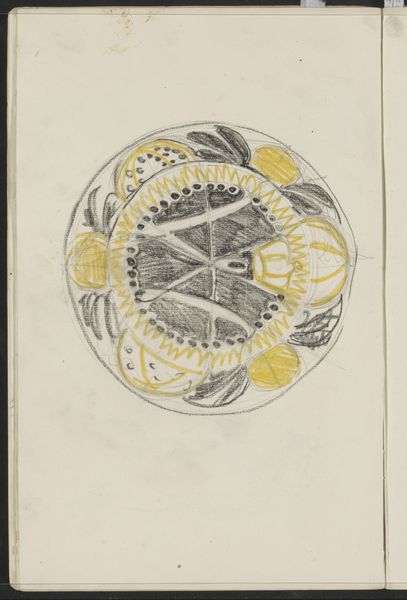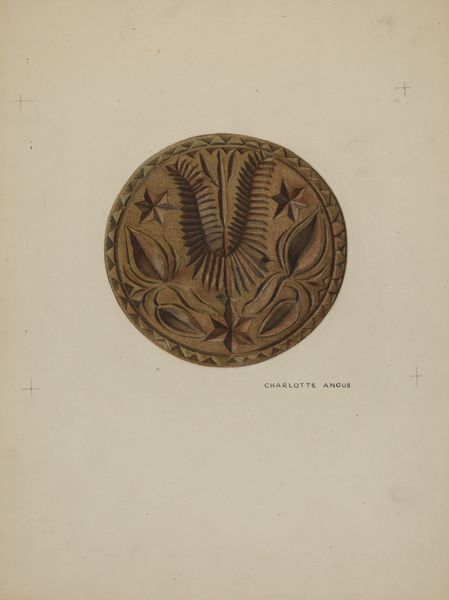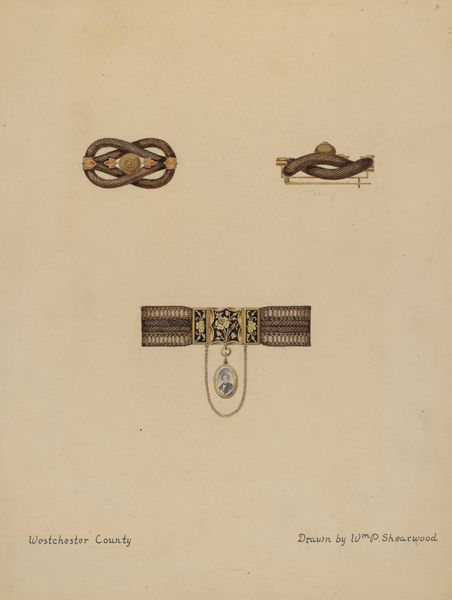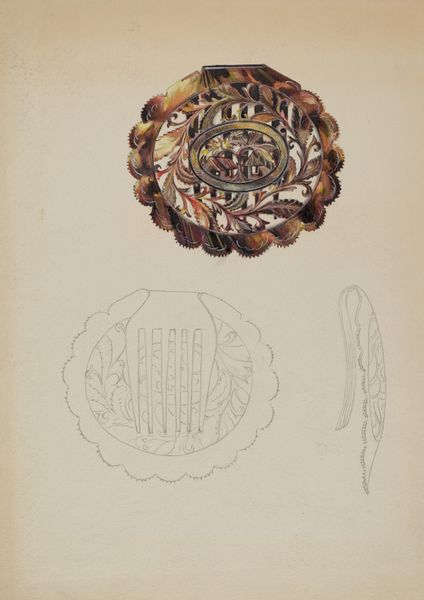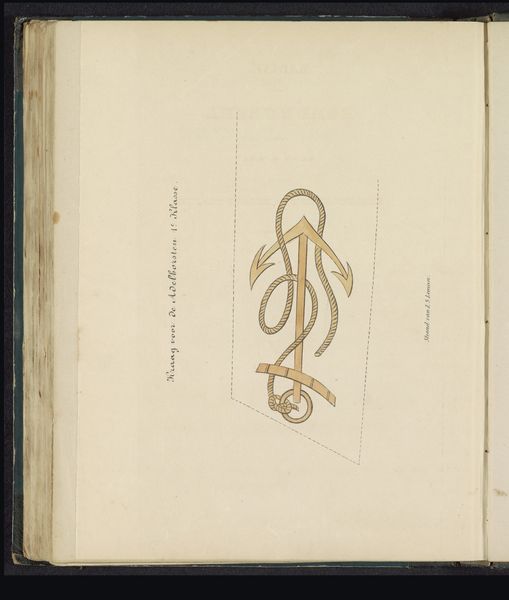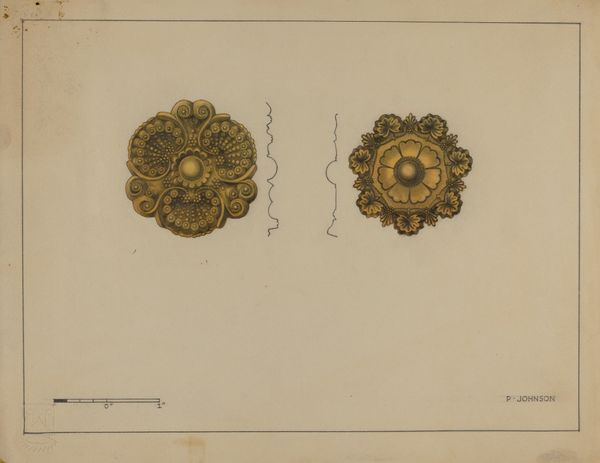
Ringkraag en nestels voor de ordonnace officieren en adjudanten van de koning, 1845 1845
0:00
0:00
willemcharlesmagnenat
Rijksmuseum
drawing, coloured-pencil, paper, watercolor
#
drawing
#
coloured-pencil
#
paper
#
watercolor
#
coloured pencil
#
romanticism
#
watercolour illustration
#
academic-art
Dimensions: height 270 mm, width 200 mm
Copyright: Rijks Museum: Open Domain
Editor: Here we have Willem Charles Magnenat’s “Ringkraag en nestels voor de ordonnace officieren en adjudanten van de koning,” created in 1845 using watercolor, colored pencil, and paper. The drawing has such intricate detail; it feels like I'm looking at an antique technical illustration. What's your take on this piece? Curator: It's fascinating to view this drawing not merely as a depiction of royal accoutrements, but as an artifact reflecting 19th-century power structures and the performance of masculinity within those contexts. Who had access to these symbols of power and status, and who was excluded? Editor: That’s a great point; it definitely wasn’t accessible to everyone! I hadn’t considered it in terms of gender roles, either. Curator: Precisely. The elaborate detailing, the almost obsessive rendering of each element, speaks to a culture deeply invested in visual markers of authority. Think about it: How does such precise ornamentation function to uphold specific social hierarchies? Editor: It creates a visual language, a way to instantly recognize rank and status within the court, almost like a uniform. The detail implies exclusivity, right? Curator: Exactly. Now consider the social realities of the time. How might feminist theory interpret these emblems of male authority? What alternative narratives are silenced by this display of power? Editor: I suppose it highlights the unequal access to representation and power within society at that time... I’m curious, are there similar objects of power that women used at the time, or perhaps artwork representing those differences? Curator: Exploring those visual contrasts reveals so much about societal values and gendered expectations! Considering artwork in this way makes one contemplate history, philosophy, and the way social dynamics were reflected in art.
Comments
No comments
Be the first to comment and join the conversation on the ultimate creative platform.


